American Dreamer:
The Work of Troy Paiva
Daniel Levis Keltner
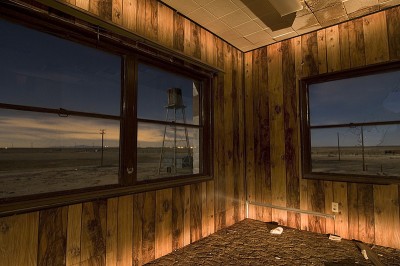
Chronicler, urban explorer, surrealist, Troy Paiva captures a distinctly American dreamscape. While documenting the remnants of the mid-to-late 20th century expansion of the American West, his work evokes a subconscious human fear regarding civilization’s future.
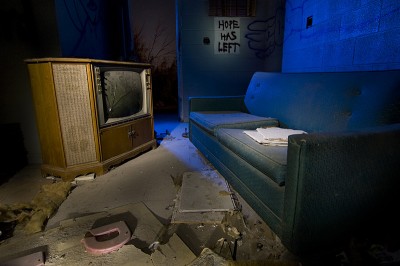
Paiva photographs an often-unseen side of the American west. Since the 70s, he has engaged in urban exploration (UE), photographing off-limits sites and facilities in outlying urban areas. As a chronicler of abandonment, closed theme parks, junkyards, and roadside detritus are all fair game. In his work, we also find sections of highway ghost towns bankrupted after construction of interstates, as well as military installations built during the Cold War long since fallen into disuse.
Unlike the UE work of photographers like Miru Kim, the clandestine nature of Paiva’s work foregrounds the pervading sense of civilization lost, elevating his sites to ruins. Some of this transformation owes to his selection of subject and setting—devices of transportation (cars, trains, semi-trucks, boats), of pleasure (slot machines, televisions, arcade games, books), and of comfort (houses, walls, sofas) frozen against the desert or washing into the shore. In these photos, we witness Time and Nature deconstructing an era once marked by human joy and progress. The datedness of many of the objects also heightens the museum-like quality of each scene (my favorite, the paperback of “Damien: The Omen II” left to yellow on the slot machine). Like all ruins, Paiva’s tell much about the inhabitants but contain one overarching message on mutability—as the artist himself says in an interview in Cameradojo.com in 2011, “everything is finite.”
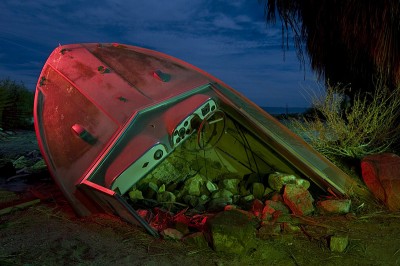
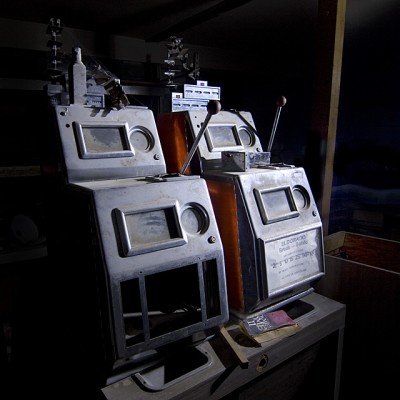
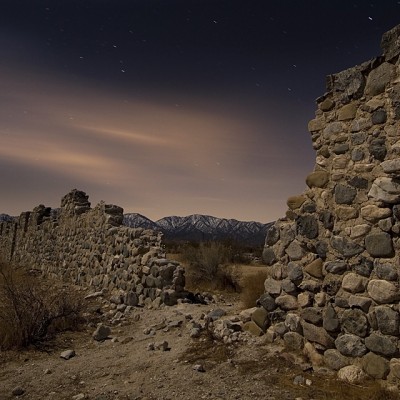
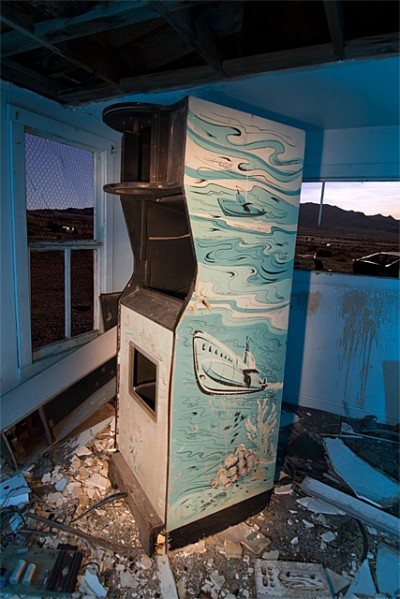
The work refuses to be pigeonholed strictly as document of urban exploration. Even at first glance, his images appear less off-limits than outer limits. Through framing, coloring, and dramatically lighting an otherwise undramatic moment, Paiva creates a cinematic vibe in the tradition of Edward Hopper. These techniques aid a viewer to read these photos as saying, “Look again—this moment is special.” However, the artist’s imposed “weird-ing” of a scene—the lending of surrealist elements—ultimately transforms mere record into art.
Paiva’s work is rendered extraordinary through a disorienting use of time/space and color. It’s hard to pin exactly at what time of day these shots were taken. The vacancy of a scene and overhead star trails speak to night photography, yet the overall brightness and clarity approaches that of daytime exposures. What we are seeing, behind the scenes, are photos taken by the light of the full moon with long exposures, softening the shadows and giving the photos a temporal quality best described as half-night.
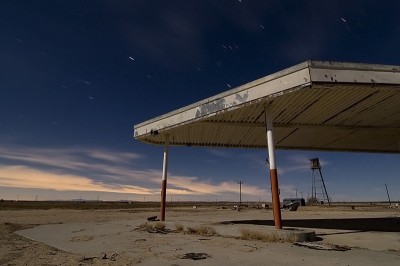
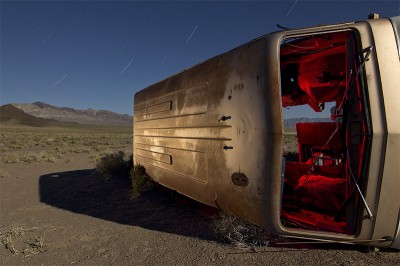
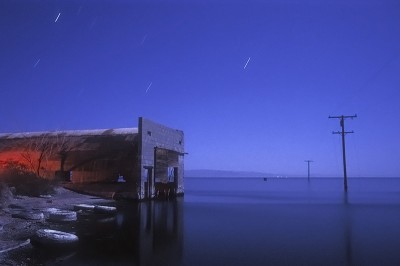
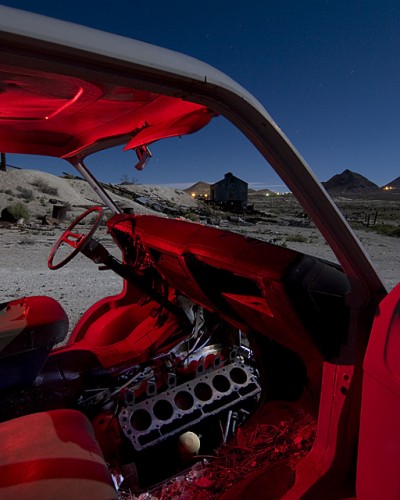
Another technique Paiva uses to intentionally disorient his viewers is light painting. He often colors his subjects by hand during the exposures with one-stroke flashes, gels, and flashlights. The neon greens, blues, and reds are distinctly electric, unnatural. This urban coloring adds eeriness, suspense, as if some intelligence is yet present in a place in which all other visual cues reek of death or erasure. As the source is not apparent, the image creates a visual conflict that creates shock and heightens wonder. Color reanimates these spaces, giving the work its surrealistic quality.
In a March 1918 essay published in the Dadaist and Surrealist journal “Nord-Sud,” Pierre Reverdy said, “The more the relationship between the two juxtaposed realities is distant and true, the stronger the image will be—the greater its emotional power and poetic reality.” Paiva subtlety accomplishes this juxtaposition in his gorgeous prints by calling attention to ruined human constructs and capturing them in a such a manner that they transcend into all the failed achievements of yesterday, our fate seemingly frozen in half-night.
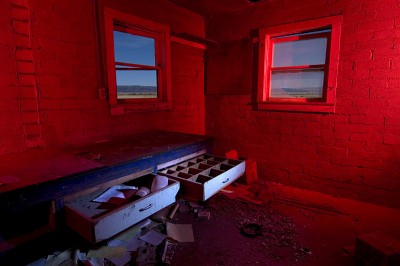
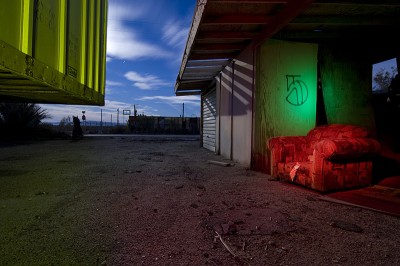
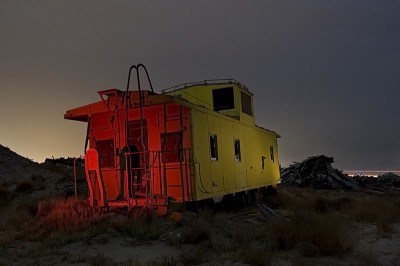
What is then the poetic reality that the artist captures? Paiva has described his creative process as “just you and the moon.” In all his work, that feeling persists; wonder edging on fear, the familiar world turned upside down, lost to time. Alone with the subject, a viewer is left to speculate on the things we all leave behind along our journey, what becomes of our homes, joys, and achievements. The work isn’t optimistic but neither is it overtly pessimistic—neither a call to action, nor a warning. Simply it holds us in fascination with an uneasy sense that perhaps we are glimpsing the future, a return to arcadia akin to the ending of all great human works, both beautiful and sad.
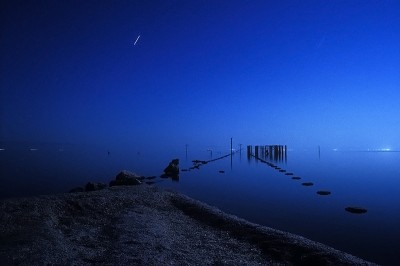
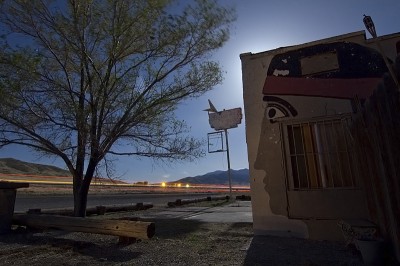

Daniel Levis Keltner, Managing Editor

wonderfully visualized work!